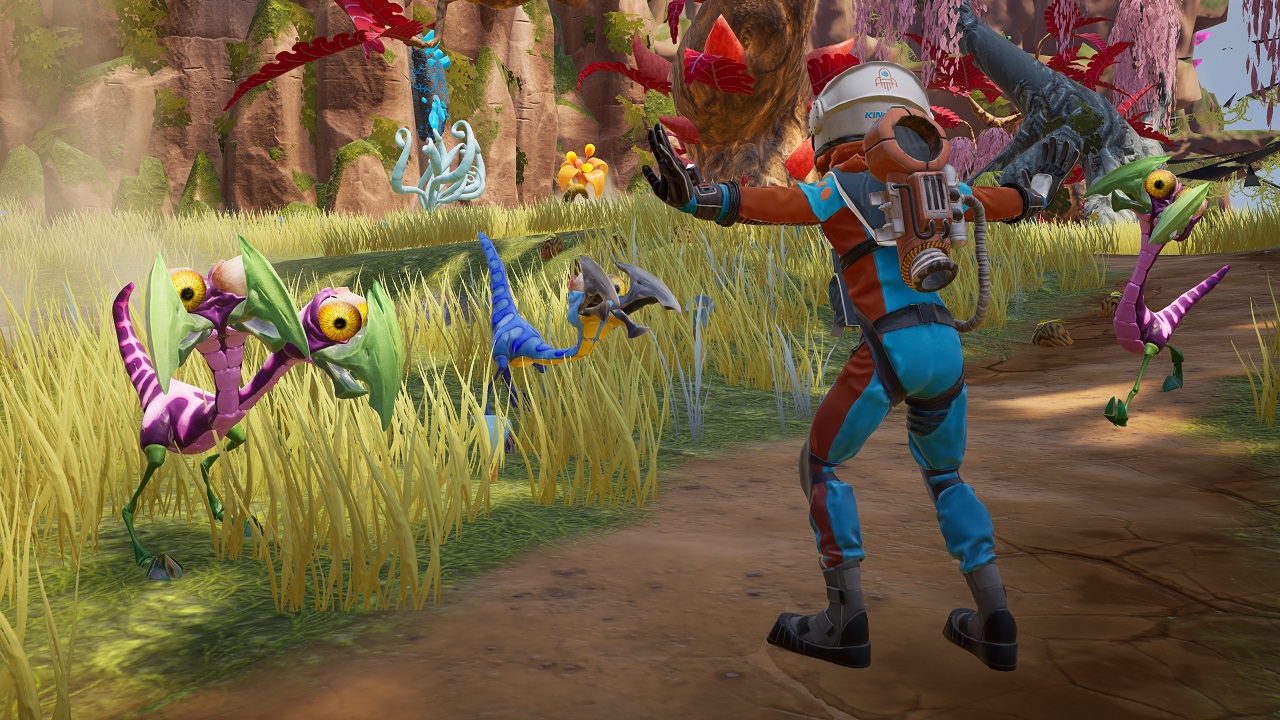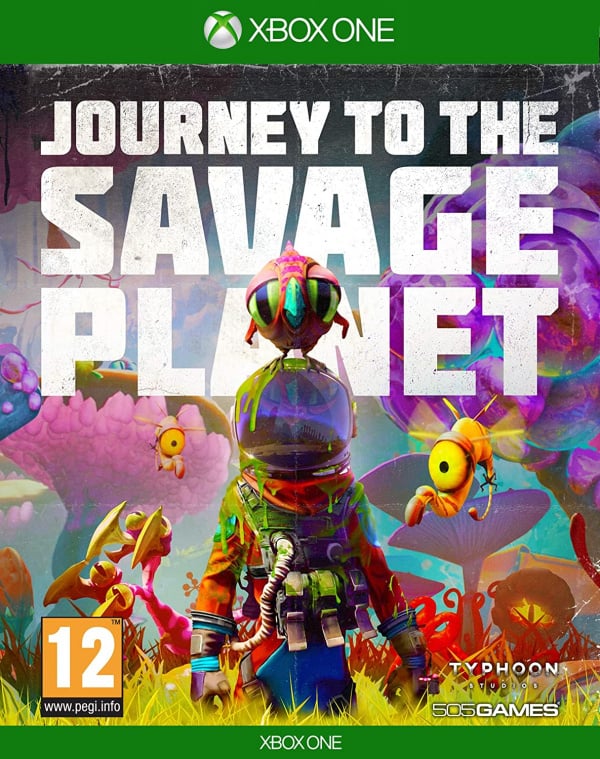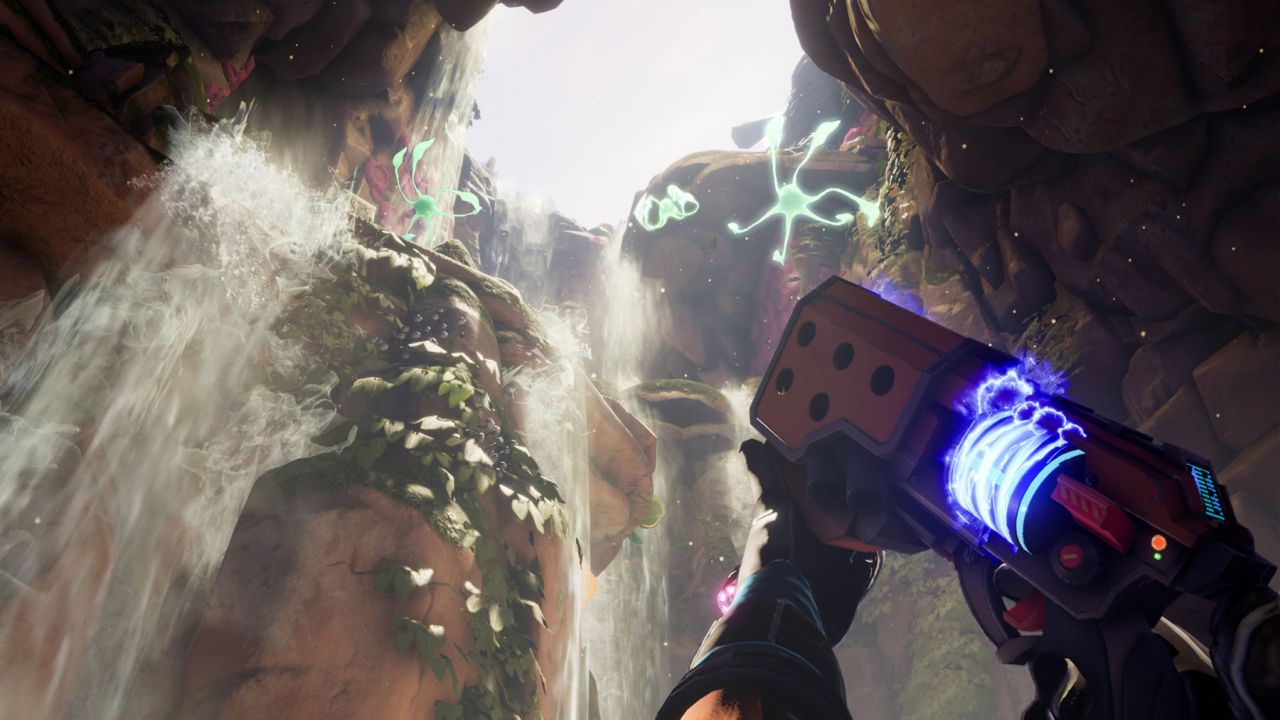

Darting around the map, unlocking new movement tech and scoffing goo to upgrade equipment is quite fun, even if the unimportance of the exploration I had committed to throughout the first half eventually ground me down and made me want to mainline the story. Journey To the Savage Planet offers a feedback loop that we’ve seen many times before, but it certainly isn’t broken and does not need fixing. I’m sure the speedrunners will have fun getting this one done in under ten minutes, though. It toys with the clever idea of letting you tinker with the limits of the world by giving you a throwable bouncy platform, but I don’t think Journey to the Savage Planet accounts for the fact that this all but breaks the game – with a bit of careful momentum there were many ways to get around some of the later puzzles, but when enemies stopped responding and I couldn’t advance quests, I realised the game couldn’t account for what I’d done – which was a shame.Ī more holistic approach to the sandbox open world would have pushed this game to be less linear, more ambitious and worthy of your time. This is tied to one of your main objectives – you’ll be tasked with stabilising some of the native fruits you find to turn them into pieces of equipment in order to proceed.

Lots of the same beasts are reused in different areas, but there can be different types of creatures depending on where you find them, like zombified or armoured versions of the puffy owls which ask you to throw acidic plants at them to make them vulnerable, amongst other things. The creature and plant designs are often interesting – one of my favourites were the Bombodoros, looming plants that drop hulking tomatoes on your head if you don’t dash past.

It’s not essential that you find them all to complete the game, you just need certain arbitrary upgrades to breach into new areas – one of the exploratory compromises made to push you through its hub worlds.Įach area has its own silly name and peculiar beasts to encounter as you doss around, upgrading equipment and cataloguing the flora and fauna. Levelling up is achieved by finding and ingesting ‘Orange Goos’, one hundred of which are dotted around the game’s map. You source these from side quests and materials that you’ll acquire by discombobulating the alien oddities hiding in caves, swamps and on sky mushrooms scattered throughout the world. The maps are relatively small but hide secrets that you’ll need to figure out later once you’ve earned and learned upgrades. To give you the skinny, it’s an open-world adventure game with some metroidvania elements. Similarly, the notice board in your busted spaceship fills up with postcards depending on where you’ve been, as you frantically search for a way back home from this unknown, hostile environment. You can scan your own corpse and bury it, turning it into a numbered monolith that reminds you of every time you made a grave mistake – it’s a brilliant turn. On the way back from my delightful dance with death I encountered one of the game’s finer details. Related: The Walking Dead – Saints and Sinners review The tiny owlish dino-beasties that roam between food piles titter and roost in packs – I swear I wouldn’t have killed any of them if I hadn’t realised the haptic joy of the power slap, the first means by which Savage Planet allows you to interact with the world.Įventually you do get a gun, but it’s completely weightless and lacks any crunch – the simple, unabated power of Journey to the Savage Planet’s happy slap reigned supreme throughout the adventure as one of its finest features, letting me send blubbery aliens flying and turning their gooey remains into masses of helpful resources. The animation team deserve a lot of credit for bringing the world to life. There were plenty of accidental discoveries like that during my seven hour playthrough.

I thought they were cute but a complete pushover – my leading thought process until I slapped an alpha and it combusted right in front of me, stripping me from my meat sack and scattering my collected resources to the wind. This first revealed itself in the starting area, where I’m introduced to a species of puffy owls. It’s made me wonder why every game doesn’t have some sort of similar system – discovering the habits of unpredictable creatures in a brave new world is always exciting. Journey to the Savage Planet understands the joy of scanning things.


 0 kommentar(er)
0 kommentar(er)
